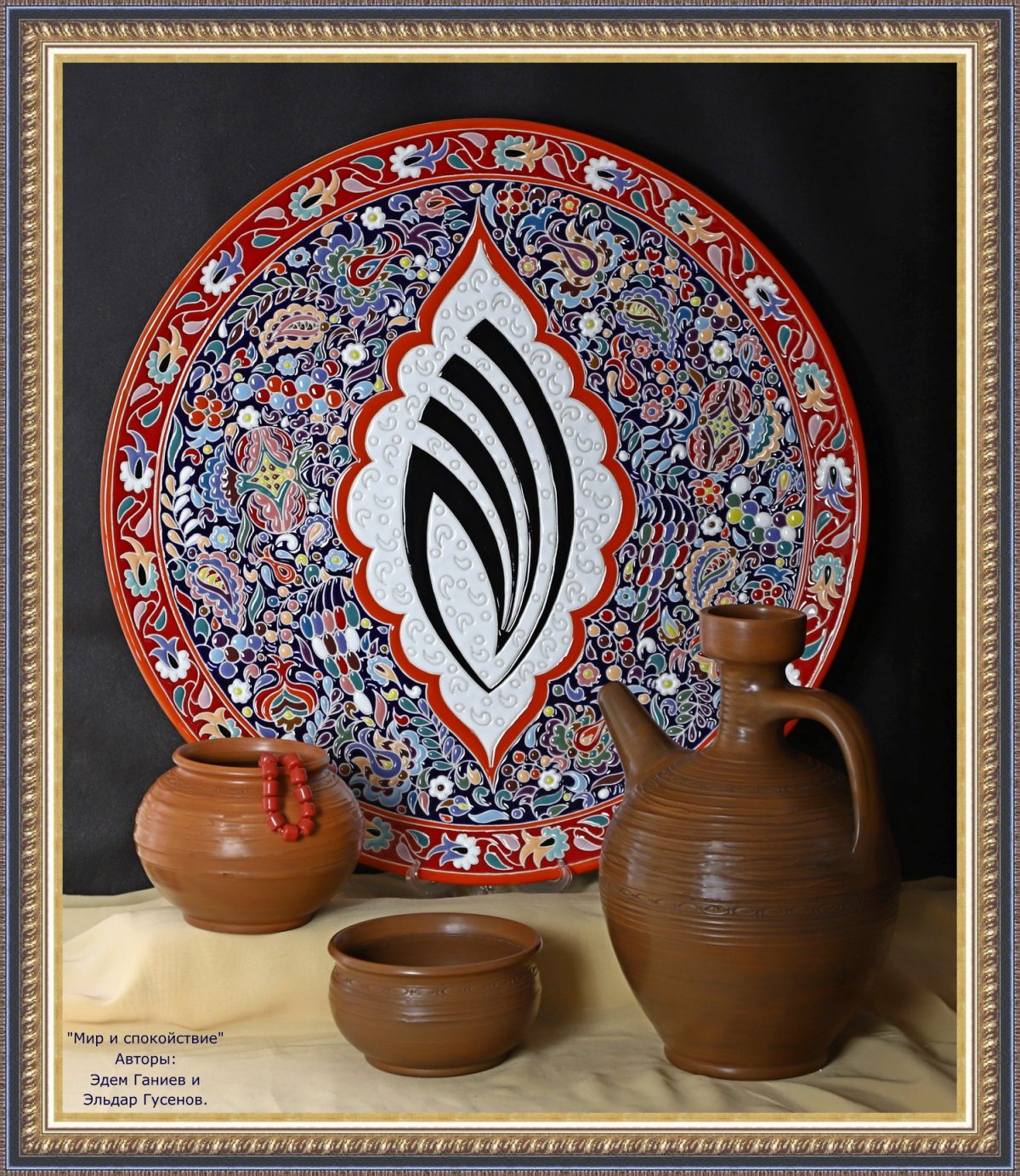Ceramics is one of the oldest varieties of handicrafts. For many centuries it was widespread in all Crimea. In 14-15 centuries production of the original utensils developed on the peninsular that showed the confluence of Byzantine traditions and decorative art of the East. Alushta was one of the centers for such a production. Decorative dishes found during excavations in this region are characterized by the complexity and sophistication of the drawing with an abundance of details. Mostly that dishes had images of fish and birds in profile. Vessels of metal were also characterized by the images of birds and fish. These and other images on traditional arts and crafts were symbolic and religious during the medieval period. Besides Alushta, Stary Krym, Sudak, Balaklava also were considered to be the center of ceramics production where clay kilns were discovered.
Pottery production in these and other places, as well as the secrets of different crafts, were passing down to the next generation. The tradition was created, and the free use of technology was developed. Some simple but useful things with expressive plastic forms became very popular. Among them were small vessels with paired handles (“qosh qulaq”), utensils for milk (“bakradzh”), round pots (“bardah”, “chelmek”), ceramic pot holders (“gul cherep”) and also ceramic crests for long pipes (“lule bash”).
After the conquest of Crimea by the Russian Empire, the traditional culture of the Crimean Tatars began to decline. In the period of the Soviet Union in 1920-1930s there was hope for the revival of Crimean Tatar folk arts and crafts. In those times co-operative craft societies were organized in Bakhchisaray, Simferopol, Yevpatoriya. The center of the revival of the ceramics was Bakhchisaray. “Ileri” co-operative craft society was producing “bardah”, “quman”, etc. with simple and elegant silhouettes. Because of World War II and deportation many crafts, including ceramics, have been virtually forgotten. Crimean Tatar artists living in Central Asia with all its rich pottery traditions got special education and began to take part in different exhibitions. In 1970-1980s during the ceramic boom in Uzbekistan such artists as Seitmemet Yakubov, Fevzi Ibragimov and Izzet Ablaev were the first who presented their monumental works decorated many public buildings on the National Union and Republican exhibitions. The main problems in the revival of the Crimean Tatar decorative arts appeared after the massive return of the majority of the people to their homeland at the beginning of the 1990s. There were immediate attempts to revive traditional embroidery, weaving, and jewelry. Nowadays none of the traditional arts have such quantity of highly professional masters educated in the ancient culture of Central Asia. Seitmemet Yakubov, Rustem Yakubov, Fevzi Seithalilov, Izzet Ablaev, Shamil Ilyasov, Rustem Skibin, Abdul Seit-Ametov, and Mamut Churlu designing ornamental sketches for artists of applied art.
Clay quarries in Crimea found in Maryino, Grushevka, Druzhkovo are a good basis for the widespread development of pottery, which will enable it to be raised on a high level.





